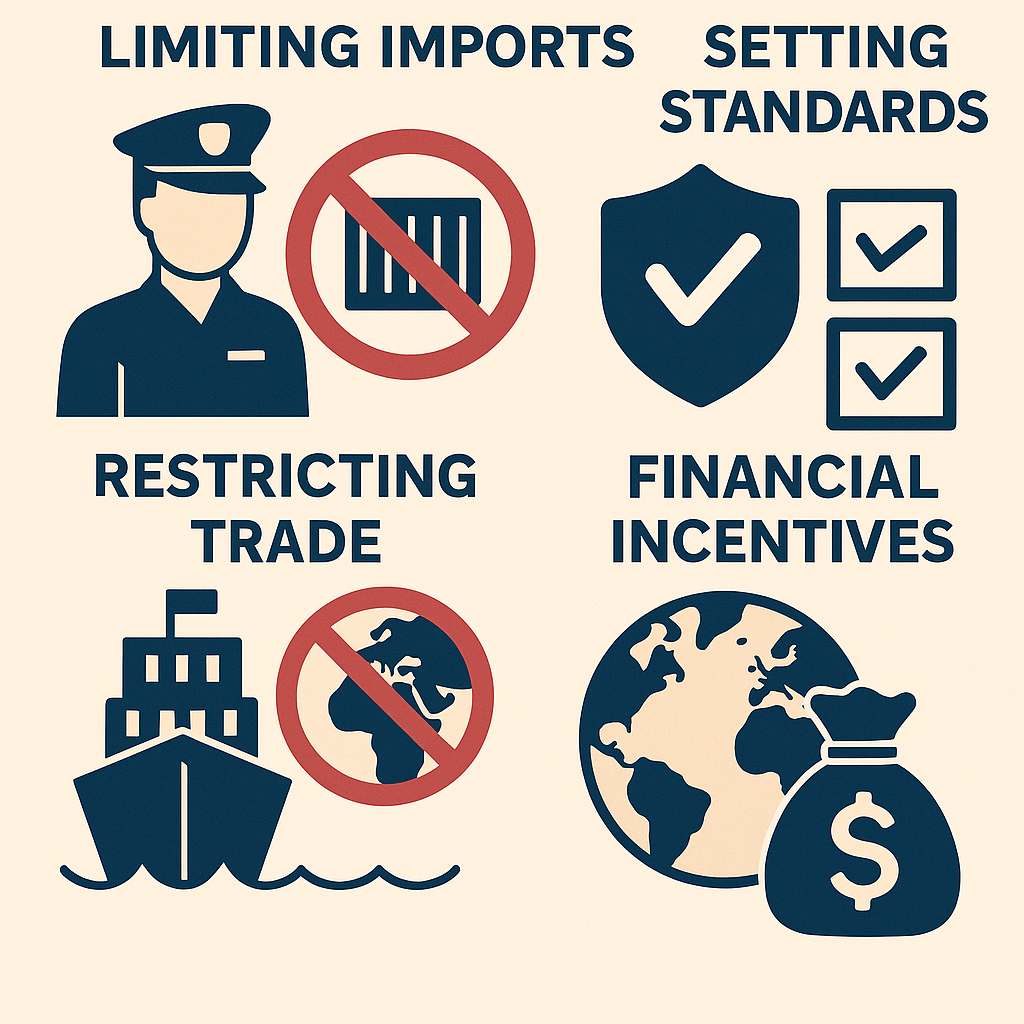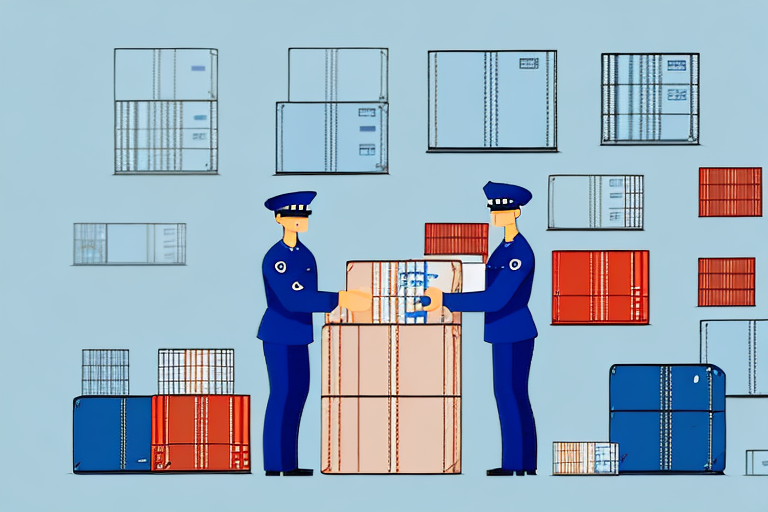In the realm of international commerce, trade barriers and trade incentives are two essential concepts that shape the dynamics of global trade. Each plays a pivotal role in promoting or hindering economic growth, shaping industry landscapes, and determining the competitiveness of nations in the global market. Understanding the concepts of trade barriers and trade incentives is crucial for governments, businesses, and individuals alike, as they directly impact the flow of goods, services, investments, and intellectual property across borders. Trade barriers and incentives also influence global supply chains, affecting how goods, services, and investments move between countries and industries worldwide.
Introduction to Trade
Trade is the engine that drives economic growth and fosters cooperation among nations by enabling the exchange of goods and services across borders. While free trade encourages open access to international markets and the efficient allocation of resources, many countries implement trade barriers—such as tariffs and quotas—to protect domestic industries from foreign competition. These protectionist measures are often designed to shield local businesses from intense competition, but they can also spark trade disputes and limit consumer purchasing power by raising prices and reducing the variety of available products. Navigating the complexities of global trade requires a clear understanding of how these policies impact economic growth, the stability of domestic industries, and the broader international marketplace.
Understanding the Concept of Trade Barriers to Protect Domestic Industries
Trade barriers encompass a wide range of policies and measures that nations adopt to restrict or regulate the flow of goods and services across borders. These barriers are typically implemented by governments with the aim of protecting domestic industries, safeguarding national security, or addressing public health and safety concerns. They can take various forms, including tariffs, quotas, embargoes, licensing requirements, and technical barriers to trade.
Tariffs, also known as import duties, are taxes imposed on imported goods, making them more expensive to acquire in the domestic market. By increasing the price of foreign goods, tariffs aim to create a competitive advantage for domestic industries, making their products relatively cheaper and more attractive to consumers. A high tariff is often imposed on imported automobiles and aluminum imports to protect domestic industries. Governments often justify imposing tariffs and higher tariffs as a way to preserve jobs and respond to unfair trade practices or geopolitical tensions. Quotas, on the other hand, set limits on the quantity of certain goods that can be imported into a country during a specified period. Quotas may limit the import of a particular good to a limited number of units within a given period, resulting in reduced consumer choice and higher prices. Quotas directly restrict the supply of imported goods, which can again benefit domestic industries by reducing competition.
Embargoes are trade barriers that completely prohibit the import or export of specific goods or services to or from certain countries. They are often imposed for political reasons, such as in response to human rights violations or to pressure nations to change their policies. Licensing requirements can also act as trade barriers by imposing bureaucratic hurdles on the importation or exportation of goods. These requirements can include obtaining permits, meeting certain quality standards, or complying with specific technical specifications. Import restrictions are another form of trade barrier, and a country imposes these measures to promote national security or self sufficiency, especially in essential goods and the agricultural sector.
Technical barriers to trade refer to regulations and standards that must be met by imported goods to ensure consumer safety, health protection, or environmental preservation. While these regulations may have valid reasons, they can also be used to create unnecessary obstacles for foreign producers, effectively erecting trade barriers. Such regulations can create an unfair advantage for domestic producers and disrupt supply chains, affecting other sectors of the economy.
While trade barriers may be implemented with the intention of protecting domestic industries and promoting national interests, they can also have unintended consequences, such as reducing overall economic efficiency, limiting consumer choice, and discouraging international cooperation and development.
One example of a trade barrier is subsidies. Subsidies are financial assistance provided by governments to domestic industries, typically in the form of grants, tax breaks, or low-interest loans. These subsidies aim to give domestic industries a competitive advantage by reducing their production costs or increasing their profitability. Financial support, such as direct payments, helps lower production costs for domestic industries, but critics argue that these protectionist policies can distort the playing field and disadvantage developing countries. However, subsidies can distort international trade by artificially lowering the prices of domestic goods, making them more competitive in the global market. This can lead to unfair competition and hinder the growth of foreign industries.
The European Union’s Common Agricultural Policy incorporates environmental sustainability standards, and the EU single market is an example of reducing trade barriers within a region.
Free Trade and Market Access
Free trade agreements are designed to break down trade barriers, making it easier for countries to access each other’s markets and benefit from increased economic efficiency. By removing tariffs and quotas, these agreements allow nations to specialize in producing goods and services where they hold a comparative advantage, resulting in lower prices and a wider selection for consumers. However, not all countries embrace free trade without reservations. Some choose to impose tariffs or other trade restrictions to safeguard national security or to nurture nascent industries that may not yet be ready to compete on a global scale. The European Union’s single market stands as a prime example of how reducing trade barriers can drive economic growth and integration, while also highlighting the ongoing debate over when and how to impose trade restrictions to protect national interests.
Examining the Role of Trade Incentives in Global Commerce
Trade incentives, on the other hand, are measures or policies put in place to encourage the international exchange of goods and services by reducing or eliminating barriers to trade. These incentives aim to stimulate economic growth, attract foreign investments, enhance market access for domestic producers, and promote international collaboration.
Trade incentives can take various forms, including preferential trade agreements, such as free trade agreements (FTAs), or regional trading blocs, involve the establishment of special trade arrangements between participating countries. These agreements typically reduce or eliminate tariffs and other trade barriers on specified goods among member countries, thereby increasing market access and encouraging greater trade flows.
Export promotion initiatives refer to strategies implemented by governments to boost their country’s exports. These initiatives can include trade missions, trade fairs, export financing programs, market research support, and export-related training and capacity-building programs. Financial support, including direct payments, is often provided to exporters to help them lower production costs and compete more effectively in international markets. By providing support and resources to domestic exporters, governments aim to expand their export markets and increase foreign exchange earnings.
Tax incentives, such as tax breaks or exemptions, are another way governments can encourage international trade. These incentives can reduce the cost of production or export, attract foreign investors, and promote job creation. By offering favorable tax conditions, governments seek to make their country an attractive location for businesses looking to establish operations or expand their existing presence.
Another form of trade incentive is the establishment of special economic zones (SEZs). SEZs are designated areas within a country that offer various incentives to attract foreign direct investment and promote international trade. These incentives can include tax breaks, streamlined customs procedures, relaxed labor regulations, and infrastructure development. By creating SEZs, governments aim to create a business-friendly environment that encourages foreign companies to set up manufacturing or service operations, leading to job creation and economic growth.
In addition to preferential trade agreements, countries can also participate in multilateral trade negotiations to further promote global commerce. These negotiations, often conducted under the auspices of international organizations such as the World Trade Organization (WTO), aim to reduce trade barriers and establish rules for international trade. Such efforts often aim to create a level playing field for developing countries, improving their access to global markets. Through these negotiations, countries can work together to address issues such as tariff reductions, intellectual property rights, and trade dispute resolution. By participating in multilateral trade negotiations, countries can create a more predictable and stable trading environment, which can benefit all participating nations.
Artificial intelligence is increasingly used to optimize supply chains and streamline customs processes, further enhancing the effectiveness of trade incentives.
The Impact of Trade Barriers on Economic Growth and Development in Domestic Industries
The imposition of trade barriers, although intended to support domestic industries, can have significant negative impacts on a country’s overall economic growth and development. By restricting the flow of goods and services, trade barriers limit market access, reduce competition, and hinder the efficiency of resource allocation.
The introduction of tariffs increases the price of imported goods for domestic consumers. As a result, consumers may be forced to pay higher prices for those goods or turn to domestic alternatives, even if they are costlier or of lower quality. This reduces consumer welfare and can lead to a decrease in overall purchasing power within the economy.
Trade barriers also limit the availability of foreign goods and technologies, which can impede the diffusion of innovation and hinder technological advancement in domestic industries. The limited access to international markets can isolate domestic firms from global best practices, reducing their competitiveness and inhibiting their ability to grow and evolve.
Furthermore, trade barriers can provoke retaliation from other countries, leading to the escalation of protectionist measures. Countries often respond to trade barriers by imposing their own countermeasures, potentially leading to trade wars and further disruptions. This tit-for-tat cycle of trade restrictions can result in reduced trade volumes, economic inefficiencies, and increased tensions between nations.
Another negative impact of trade barriers is the potential for reduced foreign direct investment (FDI). Trade barriers create uncertainty and increase the costs of doing business in a country, which can deter foreign investors. This can limit the inflow of capital, technology, and expertise that foreign investors bring, hindering economic growth and development.
In addition, trade barriers can lead to a decline in export industries. When countries impose trade barriers, other countries may retaliate by implementing their own barriers, making it more difficult for domestic industries to export their goods and services. Trade barriers can also disrupt global supply chains, especially during periods of geopolitical tensions, further impacting export industries and foreign investment. This can result in a decrease in export revenues, job losses, and a decline in the competitiveness of domestic industries in the global market.
Domestic Producers and Trade
Trade barriers such as tariffs and subsidies are often implemented to give domestic producers a leg up over foreign producers, helping them maintain a competitive edge in the face of global competition. While these protectionist measures can support certain industries, they frequently come at a cost—leading to higher prices for consumers and a reduction in available choices. Additionally, many domestic producers depend on imported inputs for their manufacturing processes, making them susceptible to supply chain disruptions and the negative effects of trade restrictions. The steel industry, for instance, has experienced the impact of tariffs and quotas in various countries, resulting in increased costs, reduced competitiveness, and, in some cases, job losses. These challenges underscore the delicate balance policymakers must strike between supporting domestic industries and ensuring a healthy, competitive market environment.
Conclusion on Trade Incentives
Trade incentives, including financial incentives and tax breaks, are powerful tools that governments use to promote domestic industries and shield them from foreign competition. However, when these incentives are perceived as unfair trade practices, they can trigger trade disputes and provoke retaliatory measures from other countries. Policymakers must weigh the benefits of supporting domestic industries against the potential risks to global trade and economic growth. By fostering free trade and minimizing trade barriers, countries can enhance market access, improve economic efficiency, and ensure food security, all while safeguarding national security and supporting domestic industries. The verification of trade agreements and government policies is essential to guarantee that they are fair, transparent, and advantageous for all parties involved—making the process of waiting for verification successful a critical step in maintaining trust and stability in the global trading system.







